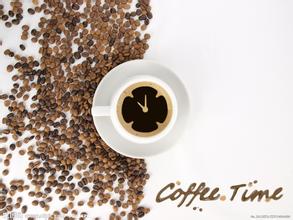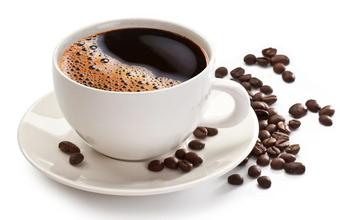Vibrant and dynamic Indonesian Mantenin Coffee Flavor Variety Features of producing area Introduction of fine coffee
During the Japanese occupation of Indonesia during World War II, a Japanese soldier drank mellow coffee in a cafe, so he asked the shopkeeper the name of the coffee, and the boss mistook him for asking where you were from, so he replied: Mandaining. After the war, the Japanese soldiers recalled the "manning" they had drunk in Indonesia. As a result, 15 tons of Indonesian coffee was transported to Japan, which was very popular. That's how Manning's name came out, and the coffee merchant is now the famous PWN Coffee Company. Known as Mantenin mandheling, it is produced all over Lake Toba in northern Sumatra. The finished product has a unique fragrance of herbs and trees.
Gold Mantenin, the Japanese adopted more stringent quality control more than a decade ago. After picking beans manually for four times, they eliminated defective beans and produced gold mantenin with dark green color and equal appearance of beans, creating another wave of market demand. Even Europe and the United States are crazy about it.
The aged Agedmandheling is as sweet as honey. The successful old bean has worn away Manning's inelegant sour taste. The sour ingredients are ripe and converted to sugar, making the coffee more round and sweeter to drink. Failed old manning is like a coffee zombie, and it tastes difficult to import. Sellers often mark Lintong Lindong and Mandheling manning coffee as dry. In fact, the pulp and coffee seeds are often separated by a variety of mixing modes, and the more common is a backyard wet treatment. The smart farmer put the freshly picked coffee cherries into a simple peeling machine made of scrap metal, wood and bicycle parts. Then put the peeled sticky beans in a plastic woven bag to ferment overnight. The next morning the soft pulp and slime that had been fermented were manually washed away. The silver-coated coffee is pre-dried on a sheet in the front yard and sent to the middleman's warehouse to remove the silver skin and further dry. Finally, the coffee was trucked to Port Medan in Medan, the capital of Sumatra, for the third and final drying. It is also reported that in other Mandheling Mantenin producing areas, after peeling, the sticky material is allowed to dry and attach to the beans, just like the semi-washing treatment in Brazil. Then use a machine to remove the sun-dried sticky and silver skin. Finally, it goes through the same two-stage drying, first in the middleman's warehouse and then in the exporter's warehouse in Medan's port of Medan.
The processing process and Sumatran characteristics. I describe these treatments in such detail because it is not clear how the soil and atmosphere and the unusual treatment techniques and the three-stage drying each affect the formation of the characteristics of Lindong and Manning coffee. Only one thing is certain. These treatments occasionally produce excellent coffee and are extremely unstable. Only by the merciless selection in the Medan port exporter warehouse can we ensure that the deep texture of Lintong Lindong and Mandheling Mantenin and the unique and low-key rich taste can emerge from the interference of other miscellaneous flavors. Mantenin has a strong taste, with a rich mellow and fragrant and lively dynamic feeling, not astringent, not sour, mellow and bitter. The appearance of Mantenin coffee beans is arguably the ugliest, but coffee fans say that the worse the Sumatran coffee beans are, the better, mellow and slippery they are. In addition to the mellow taste of Indonesian coffee, there is also a bitter sweet taste, sometimes mixed with a touch of mildew, which is popular with people who like to drink concentrated roasted coffee. Sumatra manning coffee is called "classic" because it is stored in the cellar for three years before export. But the collection coffee is not old coffee, but slightly pale coffee through special treatment, this kind of coffee is more full-bodied, the acidity will decrease, but the mellowness will increase, the finish will be longer, and will bring a strong spicy flavor, sometimes sour, sometimes walnut, sometimes chocolate. Before Blue Mountain Coffee was discovered, Manning was regarded as the best coffee.

Important Notice :
前街咖啡 FrontStreet Coffee has moved to new addredd:
FrontStreet Coffee Address: 315,Donghua East Road,GuangZhou
Tel:020 38364473
- Prev

Panamanian Coffee Fine Coffee Bean Flavor Taste Region Characteristics Flavor Description
Omar, Torrijos airport is the largest, the airport takes off and lands more than 100 flights a day, passenger traffic has more than 1.5 million passengers per year airport to the city center, from Beijing there are direct flights to Panama, Panama nearby countries can transfer to Panama City. Panama City-Tocumen International Airport: is an Airport located 24 km from Panama City.
- Next

Introduction to the description of the taste of high-quality coffee beans in the producing area of Jamaica Blue Mountain Coffee
The best Blue Mountain Coffee is undoubtedly one of the best. Although the price can ensure an adequate supply of Blue Mountain coffee, it does not guarantee the best flavor of the coffee. Also, this kind of coffee tastes much more expensive than it looks. If you want to taste its best flavor, you should put more coffee beans than other coffee, otherwise the flavor will be a little different, so the flavor is reflected in
Related
- Detailed explanation of Jadeite planting Land in Panamanian Jadeite Manor introduction to the grading system of Jadeite competitive bidding, Red bid, Green bid and Rose Summer
- Story of Coffee planting in Brenka region of Costa Rica Stonehenge Manor anaerobic heavy honey treatment of flavor mouth
- What's on the barrel of Blue Mountain Coffee beans?
- Can American coffee also pull flowers? How to use hot American style to pull out a good-looking pattern?
- Can you make a cold extract with coffee beans? What is the right proportion for cold-extracted coffee formula?
- Indonesian PWN Gold Mandrine Coffee Origin Features Flavor How to Chong? Mandolin coffee is American.
- A brief introduction to the flavor characteristics of Brazilian yellow bourbon coffee beans
- What is the effect of different water quality on the flavor of cold-extracted coffee? What kind of water is best for brewing coffee?
- Why do you think of Rose Summer whenever you mention Panamanian coffee?
- Introduction to the characteristics of authentic blue mountain coffee bean producing areas? What is the CIB Coffee Authority in Jamaica?

